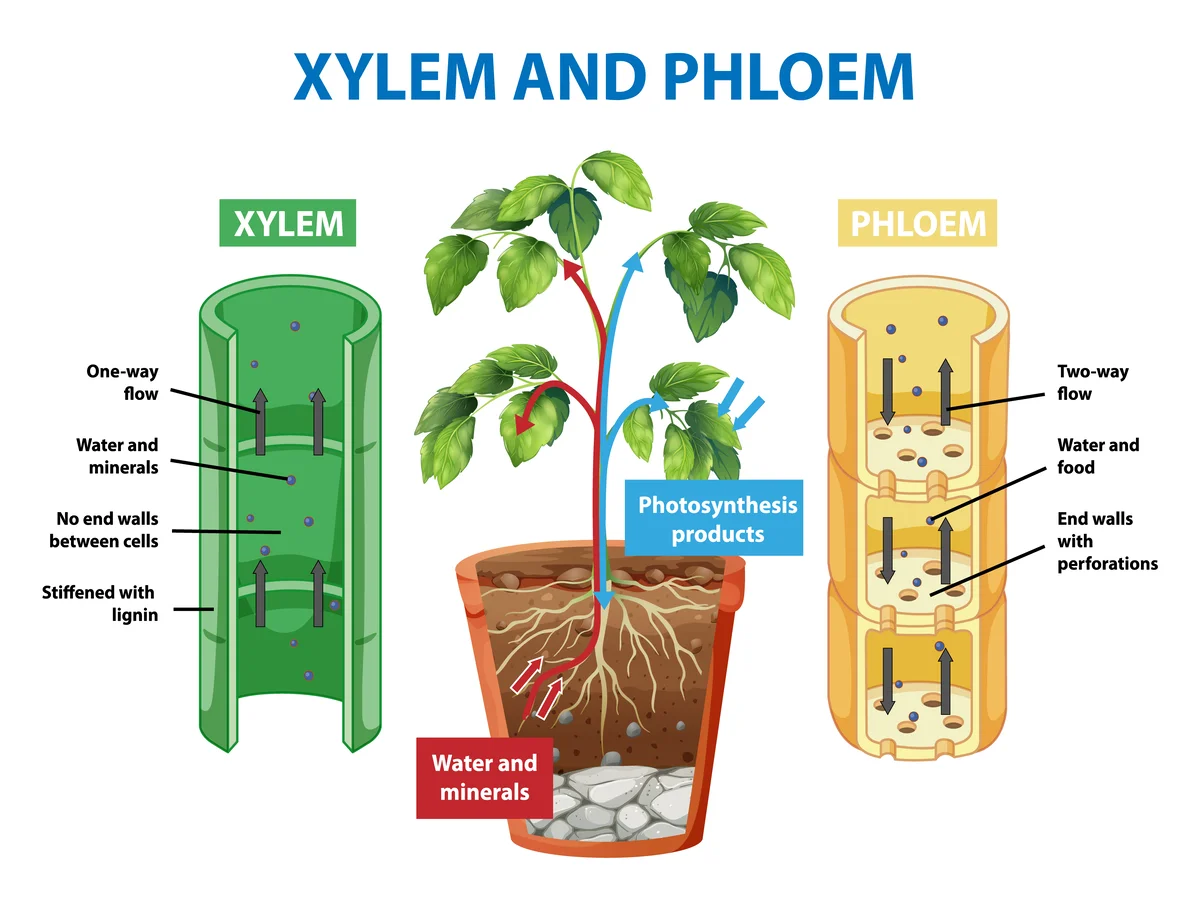Xylem: Structure, Function, and Importance in Plant Physiology

Xylem is a vital component of the plant’s vascular system responsible for the transport of water and nutrients from the roots to other parts of the plant. Composed of specialized cells, including tracheids and vessel elements, xylem plays a crucial role in maintaining plant hydration and providing mechanical support.
Structure of Xylem
The xylem is a complex tissue composed of several types of cells, each with unique structural characteristics. The main cell types in xylem are tracheids and vessel elements. Tracheids are elongated cells with tapered ends and secondary cell walls, while vessel elements are shorter, wider cells with perforated end walls. Both cell types are dead at maturity and contain lignin, a rigid compound that provides structural support to the plant.
Water Transport Mechanism
The primary function of xylem is the upward transport of water from the roots to the rest of the plant. This process, known as transpiration, relies on several physical principles. Water molecules evaporate from the stomata in leaves, creating a negative pressure gradient within the xylem. This negative pressure, known as tension, pulls water upward through the xylem vessels, similar to a chain of straws. Cohesion, the attraction between water molecules, and adhesion, the attraction between water and the xylem cell walls, aid in maintaining a continuous column of water.
Role in Nutrient Transport
In addition to water transport, xylem also plays a crucial role in the movement of dissolved minerals and nutrients throughout the plant. As water is pulled upward through the xylem, dissolved nutrients, such as nitrogen, phosphorus, and potassium, are carried along. This process ensures the efficient distribution of essential elements required for plant growth and development.
Significance in Plant Physiology
Xylem is essential for maintaining the plant’s overall health and survival. It provides structural support, preventing wilting and maintaining turgidity. The continuous water transport through the xylem also helps regulate the temperature of the plant by cooling the leaves through evaporation. Furthermore, xylem contributes to the transport of signaling molecules, hormones, and defense compounds, allowing plants to respond to environmental cues and defend against pathogens.
Key Takeaways:
Xylem is a specialized tissue that forms an integral part of the plant’s vascular system. It facilitates the upward movement of water, nutrients, and other vital substances, playing a fundamental role in plant hydration, nutrition, and overall physiology. Understanding the structure and function of xylem provides valuable insights into the remarkable adaptation and survival strategies of plants.
FAQs about xylem
What is xylem?
Xylem is a plant tissue responsible for transporting water, nutrients, and other substances from the roots to other parts of the plant.
How does xylem work?
Xylem works through a process called transpiration, where water evaporates from the leaves, creating a negative pressure that pulls water upward through the xylem vessels.
What are tracheids and vessel elements?
Tracheids and vessel elements are specialized cells found in xylem. Tracheids are elongated cells with tapered ends, while vessel elements are shorter, wider cells with perforated end walls.
What is the role of xylem in plants?
Xylem plays a vital role in maintaining plant hydration, providing structural support, and facilitating the transport of water, nutrients, and signaling molecules throughout the plant.
Can xylem transport nutrients apart from water?
Yes, xylem also transports dissolved minerals and nutrients, such as nitrogen, phosphorus, and potassium, along with water, ensuring their distribution to various parts of the plant.
How does xylem help plants survive?
Xylem contributes to the overall health and survival of plants by preventing wilting, maintaining turgidity, regulating plant temperature, and aiding in the transport of defense compounds and hormones.
How does xylem differ from phloem?
While xylem transports water and nutrients upward from the roots, phloem is responsible for transporting sugars and other organic compounds produced during photosynthesis throughout the plant.


